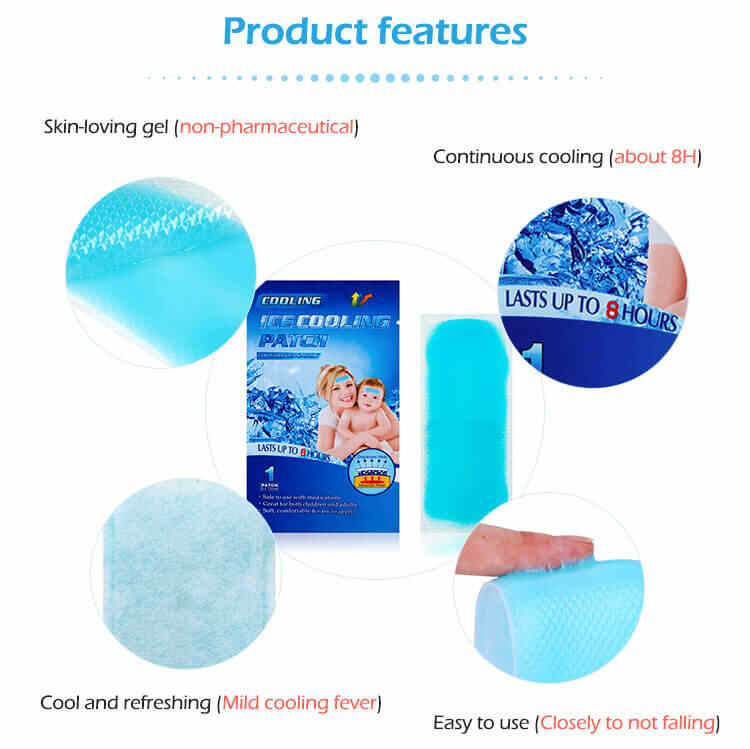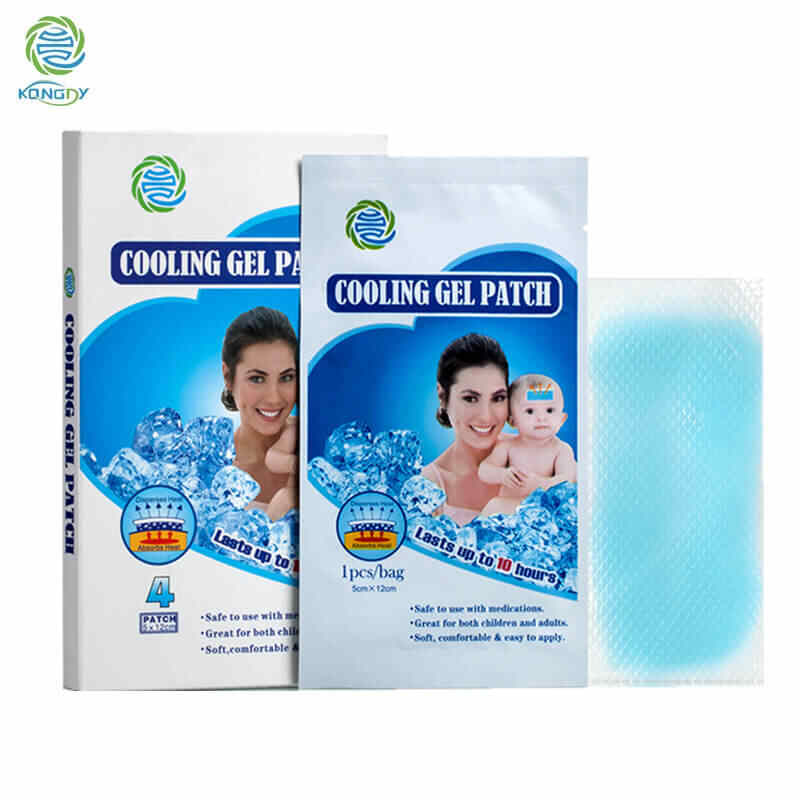How Can I Verify the Quality of a Fever Cooling Patch Supplier Before Working with Them?
In the fast-growing health and wellness industry, fever cooling patches have become a preferred solution for non-invasive temperature reduction. Whether you’re launching a new line or expanding your existing portfolio, selecting a trustworthy fever cooling patch supplier is critical. But how can you ensure that the fever cooling patch manufacturer you’re considering meets quality standards and can fulfill your brand’s unique needs?
This article provides a comprehensive, SEO-optimized guide to help you verify the quality of a supplier before entering a business partnership. We’ll also highlight why it’s essential to work with a qualified fever cooling patch OEM, especially when dealing with custom fever cooling patch or private label fever cooling patch solutions.

1. Why Verifying a Fever Cooling Patch Supplier Matters
Before committing to a long-term relationship with a fever cooling patch supplier, due diligence is not just advisable—it’s essential. The reputation of your brand depends largely on the quality and consistency of the products you deliver. A poor supplier can lead to:
Substandard product quality
Regulatory issues
Shipment delays
Branding problems (especially for private label fever cooling patch lines)
Verifying the quality of a supplier protects your investment, your customers, and your brand integrity.
2. Key Steps to Verify the Quality of a Fever Cooling Patch Manufacturer
A. Assess Manufacturing Certifications
A reputable fever cooling patch manufacturer should possess recognized certifications. These include:
ISO 13485: Indicates a quality management system for medical devices.
GMP (Good Manufacturing Practices): Ensures products are consistently produced and controlled according to quality standards.
CE or FDA Registration: For exporting to Europe or the U.S., respectively.
Request to see valid and updated copies of these certifications. Without them, consider it a red flag.
B. Audit Their Manufacturing Facility (Physically or Virtually)
A trustworthy fever cooling patch OEM should allow you to audit their facility either in person or via a virtual tour. This helps you check:
Cleanroom environment and hygiene standards
Production line efficiency and automation levels
Staff training and safety compliance
Product handling and storage protocols
If a manufacturer resists any form of inspection, you should question their transparency.
C. Request Product Samples
Before committing to custom fever cooling patch production or a private label fever cooling patch line, ask for multiple samples. Evaluate these samples on:
Adhesiveness and comfort
Cooling duration and effectiveness
Skin-friendliness and material safety
Packaging quality
This real-world testing gives you a direct understanding of what your customers will receive.
D. Check R&D Capabilities
If your business strategy includes innovation, ensure the fever cooling patch supplier has in-house R&D. Strong R&D departments offer:
Tailored formulations for custom fever cooling patch development
Enhanced product stability and performance
Support for clinical testing and efficacy validation
R&D ability is especially important when dealing with fever cooling patch OEM models that require innovation and differentiation.
E. Ask About Private Labeling Support
For brands that rely on private label fever cooling patch production, check the supplier's support services:
Custom packaging design
Brand compliance and confidentiality
Regulatory documentation for local markets
MOQ (Minimum Order Quantities) for private label products
Suppliers who have experience with private label fever cooling patch projects are more likely to deliver a hassle-free partnership.
F. Evaluate Production Capacity and Lead Time
Your supplier must match your market’s demand. Ask:
What is their monthly or annual output?
How do they manage large or urgent orders?
What is the average lead time from order to delivery?
Reliable fever cooling patch manufacturers should have systems in place to manage fluctuating demand without compromising quality.
3. Investigate Reputation and Customer Feedback
A. Online Reviews and Testimonials
Look for independent reviews or testimonials from other clients. B2B platforms such as Alibaba, Made-in-China, or even LinkedIn can provide insights into the supplier’s track record.
B. Industry References
Ask the supplier for client references—especially for companies that ordered custom fever cooling patch or private label fever cooling patch products. Direct communication with past clients can reveal much about their reliability.
C. Trade Fair Participation
Well-established fever cooling patch OEM manufacturers usually participate in international health product exhibitions. This is an indicator of credibility, visibility, and transparency.
4. Compliance with International Regulations
If you’re targeting international markets, make sure the fever cooling patch supplier complies with relevant safety and labeling regulations. For example:
U.S. FDA OTC Monograph for external analgesic and fever-relief patches
EU Regulation (EU) 2017/745 on medical devices
Import/export documentation (COA, MSDS, etc.)
A competent fever cooling patch OEM should be familiar with cross-border compliance.
5. Customer Service and Communication
Reliable communication is a strong indicator of a supplier’s professionalism. Evaluate their customer service based on:
Response speed and clarity
Willingness to answer technical or regulatory questions
Proactiveness in offering product updates or improvements
Inconsistent or vague communication could signal issues during production or after-sales stages.
6. Pilot Order Strategy
Even if a fever cooling patch supplier looks perfect on paper, you should start with a small test order. This helps:
Evaluate their reliability on deadlines
Test how they handle packaging and labeling
Understand their shipping process and problem resolution mechanism
Once they’ve proven consistent performance, you can scale up your orders with confidence.
7. Red Flags to Watch For
Lack of documentation or certification
Vague or evasive responses to questions
Unwillingness to provide samples
Inconsistencies between what they promise and what they deliver
Extremely low prices that seem “too good to be true”
If a fever cooling patch manufacturer raises any of these red flags, proceed cautiously or walk away.
Conclusion
Verifying the quality of a fever cooling patch manufacturer or fever cooling patch OEM is a non-negotiable step in building a successful business in the wellness sector. Whether you're developing a custom fever cooling patch formula or launching a private label fever cooling patch line, the right supplier will ensure product safety, performance, and long-term brand success.
By following the steps above, you’ll be well-equipped to select a trustworthy fever cooling patch supplier that aligns with your brand's vision and market goals.
Related Questions and Answers
Q1: What certifications should a fever cooling patch supplier have?
A1: Look for ISO 13485, GMP, CE, and FDA registrations. These certifications confirm quality control and regulatory compliance.
Q2: Can I request a custom fever cooling patch formula?
A2: Yes, a capable fever cooling patch OEM can provide R&D support for customized formulations tailored to your market needs.
Q3: What is the advantage of private label fever cooling patches?
A3: Private label fever cooling patches allow you to build your brand identity without investing in manufacturing infrastructure.
Q4: How do I know if a supplier can handle large orders?
A4: Ask about their production capacity, peak output capability, and average lead time. A strong fever cooling patch manufacturer will provide these metrics transparently.
Q5: What if a supplier refuses to send samples?
A5: This is a red flag. A reliable fever cooling patch supplier should willingly provide samples for quality assessment.






